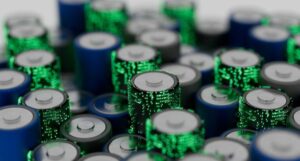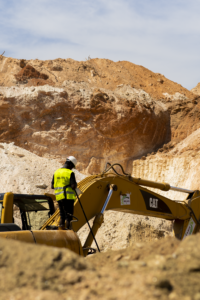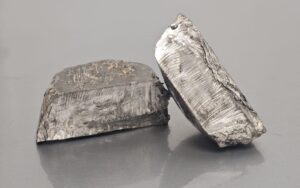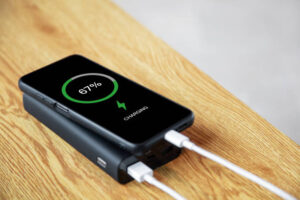First and foremost, let’s explore what Lithium is,
Lithium whose name originates from an Ancient Greek word, líthos which translates to ‘stone’ is the third chemical component on the periodic table with the symbol “Li”. It is the lightest metal and solid element on the periodic table. In addition to that, it is a soft, silvery-white alkali metal and has a single electron in its valence shell.
Although it was discovered by Brazilian chemist Johan August Arfwedson, in 1817, from a mineral known as Petalite, Lithium can be found in various sources, including Pegmatites, which have high levels of lithium-bearing minerals like Spodumene, Lepidolite, and Petalite. Additionally, it can also be found in Granites, certain Clay minerals, and Lithium Brine Deposits.
Despite the fact that Chile is the richest country in the world with Lithium, Australia is the world’s biggest exporter of Lithium. According to a review by Climate Energy Finance Australia supplied 79% of the world’s hard-rock lithium (spodumene concentrate), and 53% of the global lithium supply in 2022. Other countries that produce lithium include Nigeria, Zimbabwe, Argentina, China, Russia and Canada.
Moving on, here is a table outlining some key characteristics of the element Lithium:
| Property | Value |
| Atomic Mass | 6.938 gm |
| Density | 0.534 g/cm3 |
| Atomic number | 3 |
| Atomic symbol | Li |
| Appearance | Silvery White |
| Atomic Radius | 152 pm |
| Melting Point | 180.50 °C (356.90 °F) |
| Boiling Point | 1,330 °C (2,426°F) |
| Critical Point | 3220 K, 67 MPa |
| Heat of Fusion | 3.00 kJ/mol |
| Heat of Vaporization | 136 kJ/mol |
| Molar Heat Capacity | 24.860 J/(mol·K) |
| Electronegativity | 0.98 (Pauling Scale) |
| Oxidation State | +1 |
| Electronic Configuration | 1s22s1 |
| Magnetic Ordering | Paramagnetic |
| Crystal structure | Body-Centered Cubic |
| Specific Gravity | 0.534 at 20 °C (68 °F) |
Now that a basic understanding of the element, Lithium has been acquired, we will delve into the purpose of this article which is to explore the various uses and application of Lithium.
Due to the diversity of this element, it has been used in various sectors which includes:
- Industrial sector
- Chemical and Laboratory sector
- Aeroscope sector
- Medical sector and so forth
However, for the purpose of this article, we will take a look at its uses from the different sectors in order to get a broad view of its application from a general standpoint.
They include:
- Batteries
Lithium can be used to make rechargeable and non-rechargeable batteries. This is due to their high energy density and long-lasting performance
For the rechargeable battery aspect, a lithium-ion or Li-ion battery is a type of rechargeable battery which uses the reversible reduction of lithium ions to store energy. They are divided into high power rechargeable batteries which is used in electric vehicles and smaller lithium storage batteries which include smartphones, laptops, tablets, and cameras.
Moving on to non-rechargeable batteries, examples include heart pacemakers, toys and clocks.
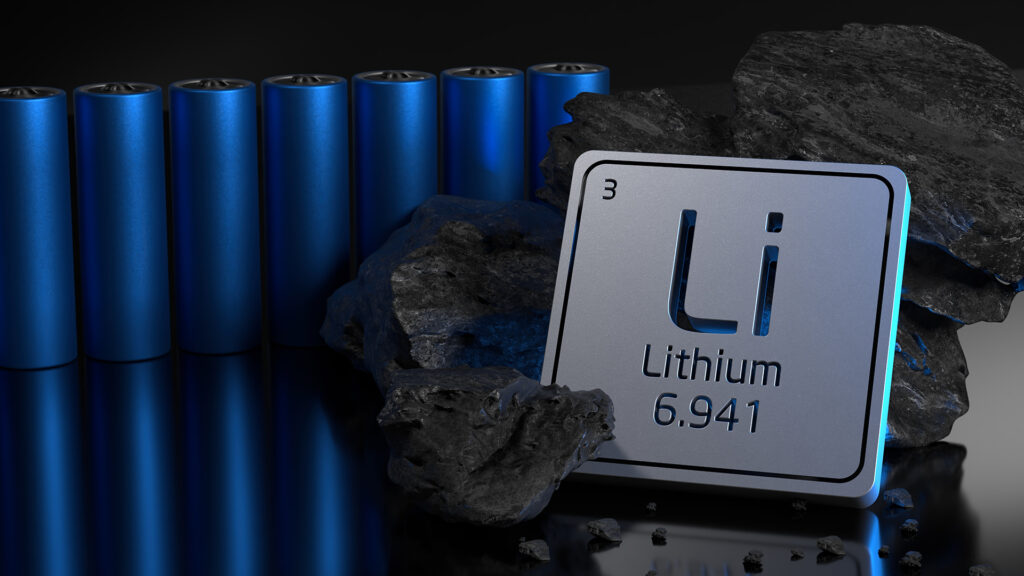
2. Metallurgy
Metallurgy is defined as a process that is used for the extraction of metals in their pure form. The compounds of metals mixed with soil, limestone, sand, and rocks are known as minerals. Metals are commercially extracted from minerals at low cost and minimum effort. These minerals are known as ores.
Another key point to note is that in the metallurgy process, the active element of lithium is used as a scavenger (remover of impurities) in the refining of such metals as iron, nickel, copper, and zinc and their alloys. Spodumene, a mineral rich in lithium, is often a source of lithium mining.
3. Alloys
Lithium is employed as an alloying agent to enhance the strength and reduce the weight of metals like aluminum and magnesium alloys.
For instance, lithium magnesium alloys can be used for armor platings and foils while lithium-aluminum alloys can be used in producing the parts of airplanes and high-speed trains.
4. Treatment of mental conditions
Lithium can be used for mood stabilizers to treat mental conditions which include bipolar disease, schizoaffective disorder and cyclic major depression. In patients suffering from such mental illnesses, it is recognized for its ability to enhance mitochondrial function and, notably, to counteract the shortening of telomeres caused by the condition.
Additionally, the use of lithium for psychiatry was discovered in 1948 by John Frederick Joseph Cade AO who was an Australian psychiatrist. He discovered the effects of lithium carbonate as a mood stabilizer in the treatment of bipolar disorder, then known as manic depression.
5. Ceramics and Glass
Lithium compounds play a crucial role in the manufacturing of ceramics and glass, effectively enhancing properties like reducing thermal expansion and it increases mold strength.
Furthermore, by adding lithium to the production of ceramic and glassware, glass melt rate is increased, viscosity is reduced, and melt temperature is diminished which then results in increased productivity, energy efficiency, and improved molding advantages.
In addition, it also improves durability of ceramic wares and ensures colour consistency.
6. Optics
According to Wikipedia, Optics is the branch of physics that studies the behaviour and properties of light, including its interactions with matter and the construction of instruments that use or detect it. Optics usually describes the behaviour of visible, ultraviolet, and infrared light.
Specially employed in optics manufacturing, lithium fluoride which is artificially grown as crystals facilitates improved visibility in the infra-red, ultra-violet, and vacuum ultraviolet ranges.
Similarly, it possesses one of the lowest refractive indexes and allows the farthest transmission range in the deep ultraviolet compared to most common materials.
7. Air Purifier
Lithium chloride and lithium bromide are substances that easily absorb moisture from gas streams, making them effective desiccants. They help remove humidity from gases.
In confined spaces like spacecraft and submarines, lithium hydroxide and lithium peroxide are commonly used to purify the air by removing carbon dioxide. Among various alkaline hydroxides, lithium hydroxide is favoured due to its low weight. It absorbs carbon dioxide from the air and converts it into lithium carbonate. This helps maintain a clean and breathable atmosphere in these enclosed environments.
8. Aerospace
Due to its lightweight and high energy storage capabilities, Lithium is being used by the aerospace industry. It plays a critical role in providing power in spacecraft, satellites, and other aerospace applications thereby ensuring efficient and reliable operations.
For example, lithium-ion batteries are predominantly utilized in unmanned small/micro reconnaissance aircraft within the aviation domain. Using the United States of America as an illustration, they created several small unmanned reconnaissance aircraft in 2000 which underwent testing and were subsequently deployed in the Afghanistan War and the Iraq War.
One notable example is the “dragoneye” UAV, developed by Aero Vironment which employed lithium-ion batteries as its power source.
9. Coolant for Nuclear Reactors
A nuclear reactor is a device utilized to start and regulate a fission nuclear chain reaction or nuclear fusion reactions. These reactors are employed in nuclear power plants to generate electricity and are also utilized in nuclear marine propulsion.
Due to its high heat absorption capacity, Lithium 7 has gained interest for its use as a Coolant.
In conclusion, lithium can be applied across various industries ranging from the medical industry to the aerospace industry and it can be seen to serve a wide range of purposes across them.

At Dellahs Mining, our journey began with the discovery of abundant spodumene deposits in Nigeria. We’ve since become a part of the pioneering force in the lithium mining industry, providing a sustainable source of this critical element for diverse applications worldwide. Our commitment to responsible mining and environmental stewardship remains unwavering, ensuring a brighter, sustainable future for all.


